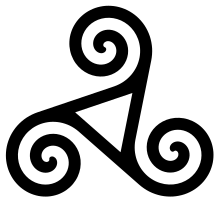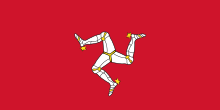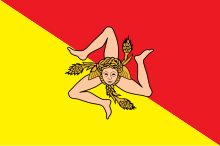Trisquel
The trisquel, triskelion or triskele (of rotational symmetry) is an (artistic) motif consisting of three joined spirals, three legs bent human figures or three lines extended or bent from the center of the symbol. The word comes from the Greek triskelés τρισκελής which means "three legs", from the prefix "τρι-"(tri-) three times and "σκέλος& #3. 4; (skelos) leg. Although it appears in various places (Galician necklaces) and periods including 3200 B.C. C. in Newgrange, is an essential characteristic part of the Celtic art of the La Tène culture of the Iron Age. It is included in the shield of the Isle of Man, and with a central Medusa face in that of the Italian island of Sicily.
According to Celtic culture, the triskelion represents evolution and growth, the balance between body, mind and spirit. It manifests the beginning and the end, the eternal evolution and the perpetual learning. Among the druids it symbolized learning, and the trinity Past, Present and Future.
According to this culture, the druids were the only ones who could carry this sacred symbol. As a talisman, it was used to relieve fevers and heal wounds. Numerous trisquels have been found in the form of petroglyphs engraved in the stone; such vestiges are very common in the Spanish autonomous communities of Galicia, Asturias, Cantabria, Navarra and the Basque Country.
The so-called "hoopoe cup" that simulates a magical flight, with three wings, to link the world of mortals with divinity through birds, turning the aforementioned symbol into a representative icon of Celtic culture. This ceramic is preserved in the Numantino Museum in Soria.
Pre-Roman triskeles (right-handed and left-handed trescelas) have also been found in Vizcaya, on stelae found in Meñaca, Dima and Zamudio. Likewise, it appeared on coinage from the pre-Roman city of Ilíberis (today Grenada).
Image gallery
Contenido relacionado
Convent of San Marcos (León)
Frederick William IV of Prussia
27th century BC c.









